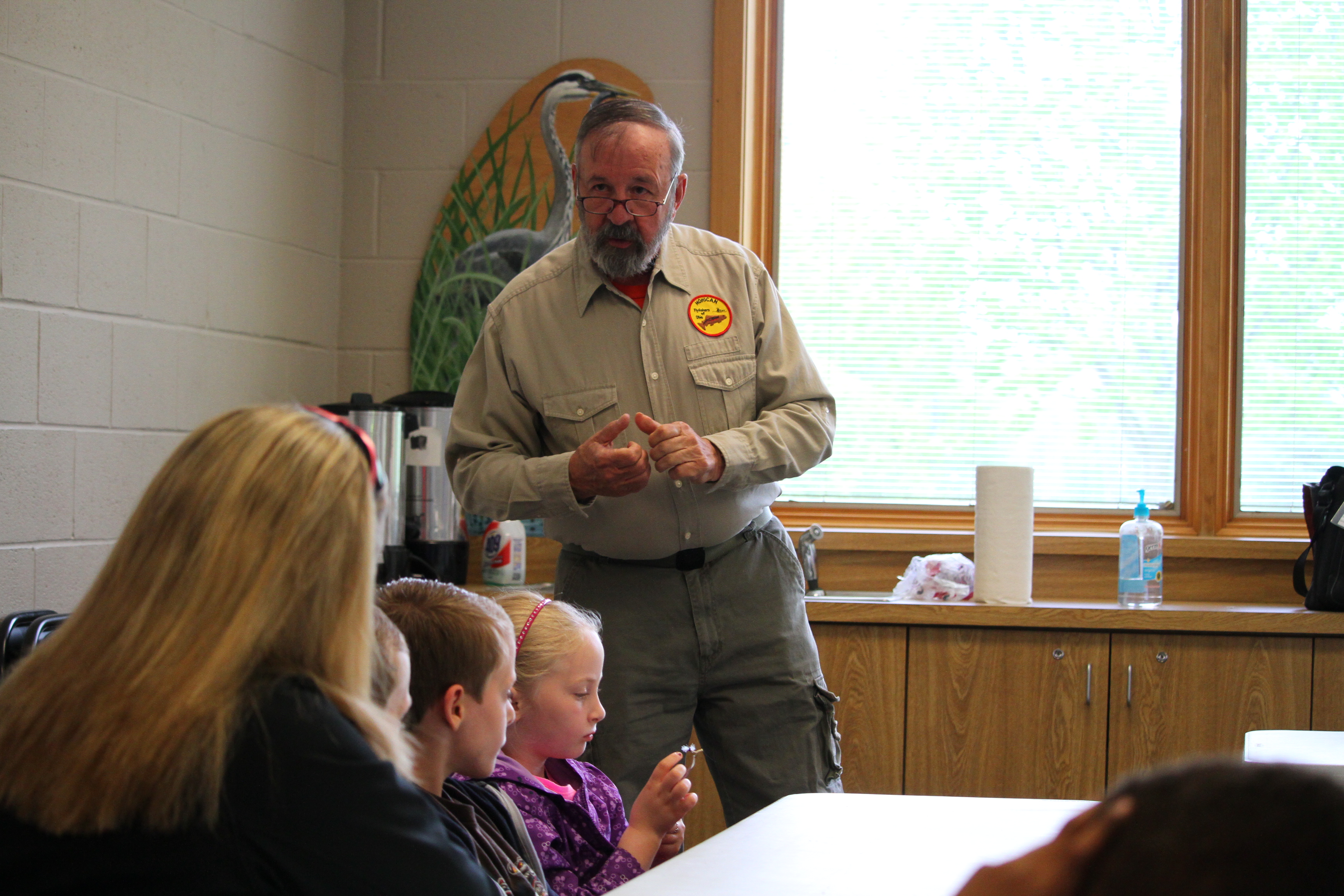By Bob Strohm
bstrohm@wbcowqel.com
For fish that are not satiated by a regular worm at the end of a hook, more advanced fishing tackle is needed. Sometimes a minnow or similar looking lure works, but other times a fly is needed to catch the big one.
At Lowe-Volk Park on Saturday a program was held on how to tie a fly as well as what materials are used to make a homemade fly. Hosted by Dave Meadows of the Mohican Fly Fishers, the program started out with Meadows showing examples of the flies and nymphs that the fly-lures would be replicating.
Meadows noteded the difference between fly tackle and regular tackle.
“When you have a spinning rod, you have a thin monofilm that is almost invisible. You tie your lure to the end of it and you cast it. The weight of that lure pulls the line off the reel. These flies weigh nothing. So, you have a thicker fly line,” Meadows explained. “It is plastic coated, very flexible, and you have to move the fly line back and forth. Attached to the end of that fly line is a monofilament. It starts out heavy and it tapers down to maybe a two-pound test and that is where the fly gets tied off.”
Meadows spoke about the art of making a fly for fishing.
“You get the enjoyment of doing it yourself, just like a cabinet maker, and if you go to the sporting goods store and you buy some kind of dried fly for two dollars apiece, and about the second cast it is lost on the log,” Meadows said. “You can probably make them for about a quarter a piece, the most expensive part is the hook, and a nice evening of fishing you can go through a half a dozen of flies, so you can either buy them or make them yourself.”
After showing the different bugs that certain fish go for, Meadows displayed various examples of fly-lures as well as what materials they are made from.
“To make a fly usually it is made from feathers and furs, it runs the gambit from wood duck to chickens that are raised genetically for their feathers. You can use elk to boar, and synthetics,” Meadows said. “Smaller flies come from the bottom feathers on a cape, while larger ones come from the upper part. Another thing is the quality of feathers. Good quality feathers float better.”
Meadows noted that the hardest part about making your own fly would be finding a natural substance for the body of the fly. Meadows explained that in the early days of fly fishing wool was used; however, that would get wet and eventually render a fly useless. Modern fly makers use polypropylene. Another material used for the body is cork, which is then painted.


